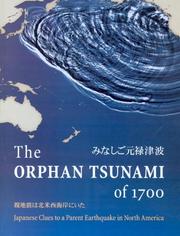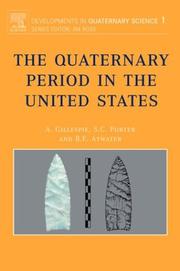| Listing 1 - 3 of 3 |
Sort by
|

ISBN: 0295802375 9780295802374 0295985356 9780295985350 Year: 2005 Publisher: Reston, Va. : Seattle : U.S. Geological Survey ; In association with University of Washington Press,
Abstract | Keywords | Export | Availability | Bookmark
 Loading...
Loading...Choose an application
- Reference Manager
- EndNote
- RefWorks (Direct export to RefWorks)
Tsunamis --- Subduction zones --- Paleoseismology --- Earthquake sea waves --- Seismic sea waves --- Seismic surges --- Tidal waves --- Tunamis --- Natural disasters --- Ocean waves --- Zones, Subduction --- Plate tectonics --- Holocene Epoch --- Late Quaternary Period --- Postglacial Epoch --- Recent Epoch --- Historical seismicity --- Historical seismology --- Palaeoseismology --- Paleoseismicity --- Seismicity, Historical --- Paleogeophysics --- Seismology --- History
Book
ISBN: 0295998512 9780295998510 0295998083 9780295998084 Year: 2015 Publisher: Reston, Va. Seattle
Abstract | Keywords | Export | Availability | Bookmark
 Loading...
Loading...Choose an application
- Reference Manager
- EndNote
- RefWorks (Direct export to RefWorks)
From the traces of a devastating tsunami in Japan during the winter of 1700, scientists discover how it was recorded in Japanese history and then backtrack it to its origins via geological evidence in North America. Their work shows how tsunami research has evolved over three centuries and how this event impacts current warning systems.
Paleoseismology --- Subduction zones --- Zones, Subduction --- Plate tectonics --- Holocene Epoch --- Late Quaternary Period --- Postglacial Epoch --- Recent Epoch --- Historical seismicity --- Historical seismology --- Palaeoseismology --- Paleoseismicity --- Seismicity, Historical --- Paleogeophysics --- Seismology

ISBN: 9780444514714 0444514708 0444514716 1280967242 9786610967247 0080474098 9780444514707 9780080474090 9781280967245 6610967245 Year: 2004 Volume: 1 Publisher: Amsterdam [Netherlands] ; New York : Elsevier,
Abstract | Keywords | Export | Availability | Bookmark
 Loading...
Loading...Choose an application
- Reference Manager
- EndNote
- RefWorks (Direct export to RefWorks)
This book reviews advances in understanding of the past ca. two million years of Earth history - the Quaternary Period - in the United States. It begins with sections on ice and water - as glaciers, permafrost, oceans, rivers, lakes, and aquifers. Six chapters are devoted to the high-latitude Pleistocene ice sheets, to mountain glaciations of the western United States, and to permafrost studies. Other chapters discuss ice-age lakes, caves, sea-level fluctuations, and riverine landscapes. With a chapter on landscape evolution models, the book turns to essays on geologic processes
Geology, Stratigraphic --- Geology --- Stratigraphie --- Géologie --- Quaternary Period
| Listing 1 - 3 of 3 |
Sort by
|

 Search
Search Feedback
Feedback About UniCat
About UniCat  Help
Help News
News